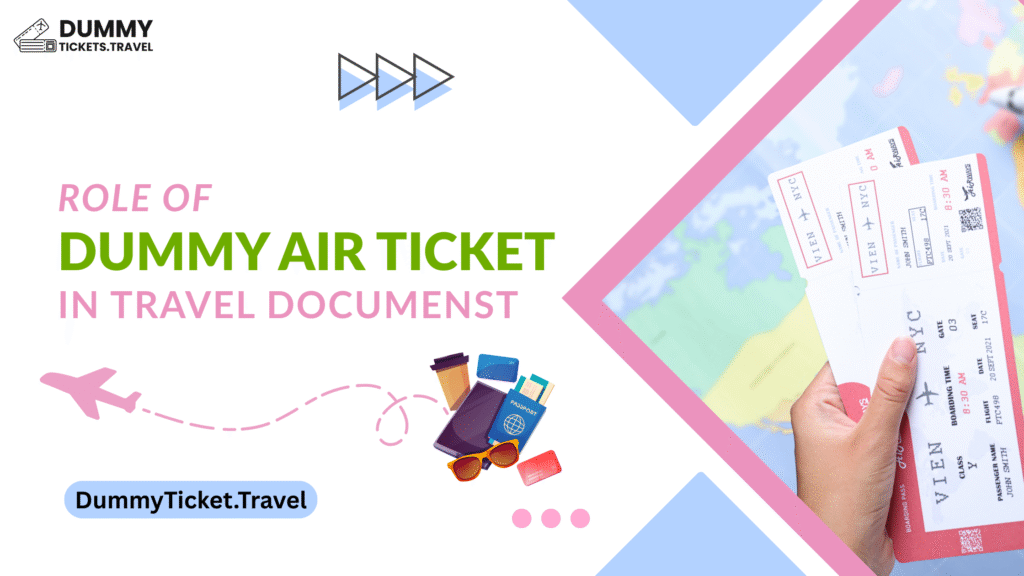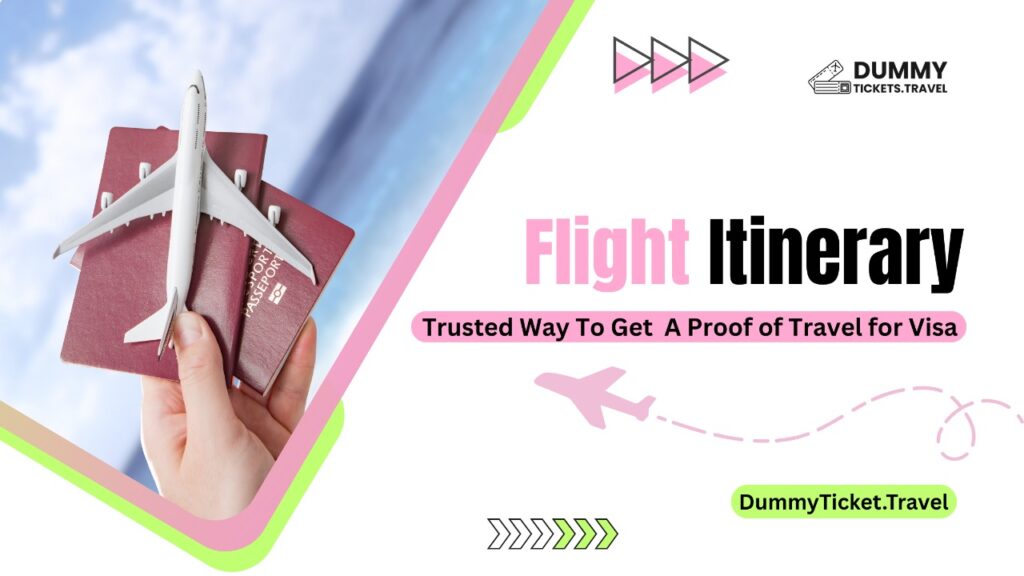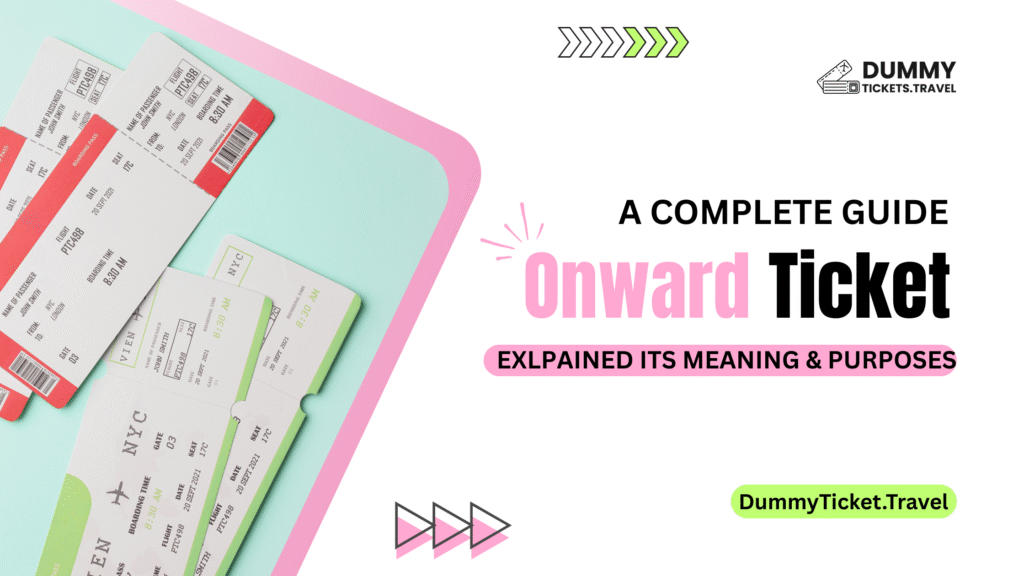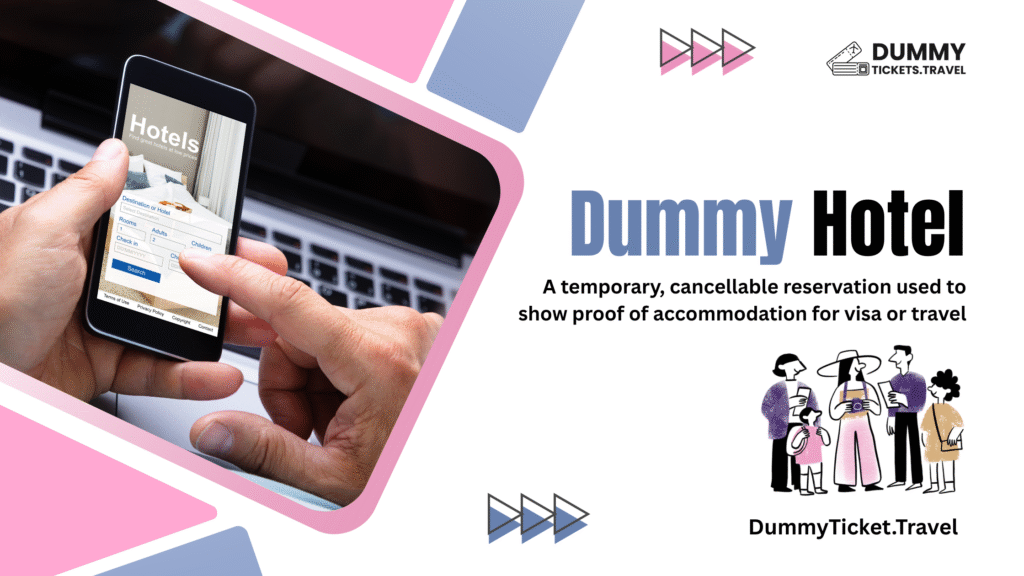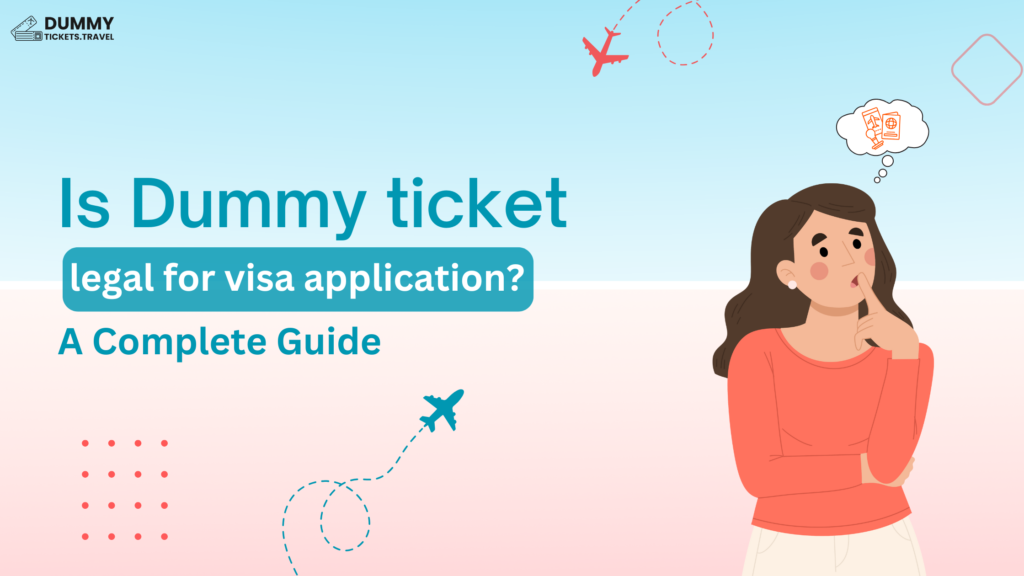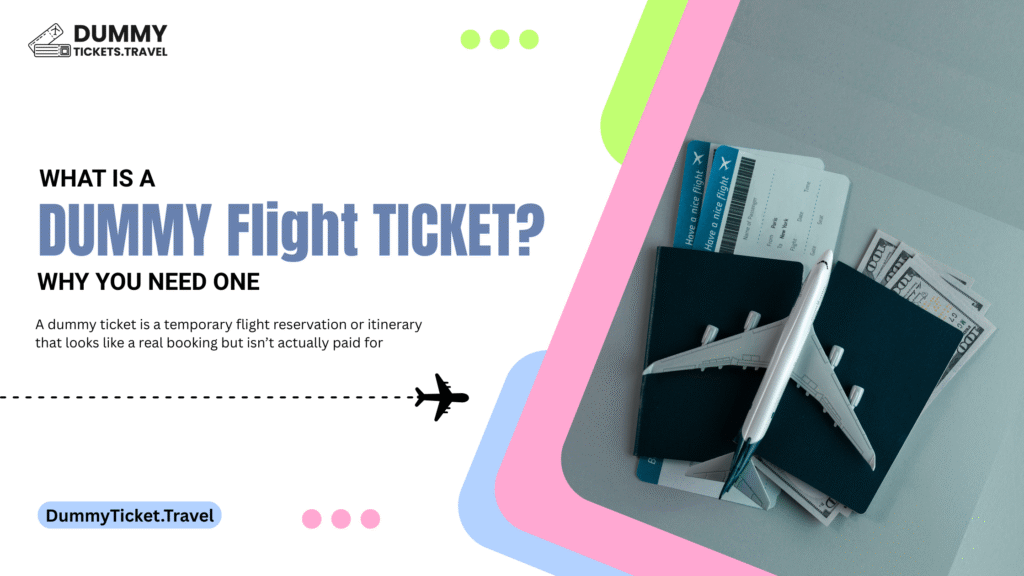What Is the Role of a Dummy Air Ticket in Travel Documentation? Legal Guide & Alternatives
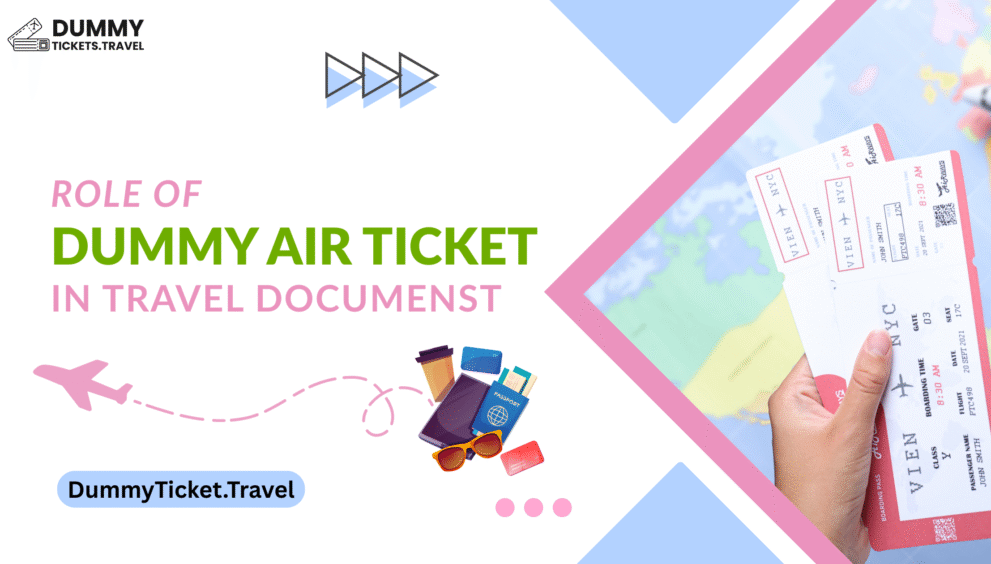
Why does the term “Dummy Air Ticket” matter?
Travelers and visa applicants often encounter the phrase dummy air ticket. People use it to describe a short-term, verifiable flight reservation or itinerary they create to prove onward or return travel when applying for visas or crossing immigration checkpoints.
This document does not inherently count as a forgery. When created properly, it includes a real booking reference (PNR) and flight details. Confusion arises because some services market “dummy tickets” as cheap or free substitutes that look like real tickets without ever being ticketed.
Embassies and consulates usually ask only for proof of intended travel dates, not a paid ticket, because they want to prevent applicants from losing money if officials refuse the visa.
That practical distinction — reservation versus paid, ticketed travel — drives the discussion and explains why the term attracts both legitimate use and risky, sometimes fraudulent, practices.
What exactly is a dummy air ticket?
A dummy ticket (also called a flight itinerary for a visa, a reservation for a visa, or an onward ticket) is essentially a snapshot of a potential booking: airline, flight numbers, dates, times, routeing, and—importantly—a booking reference or Passenger Name Record (PNR).
When the reservation is made through an airline or an authorised travel agent, the PNR can be checked by officials and will show that a booking exists; that is legal and commonly accepted by many embassies as proof of intent to leave the destination country.
What differentiates a legitimate reservation from a fake is verifiability and intent: a real reservation can be independently confirmed by the airline (or via global distribution systems used by agents), whereas forged PDFs, altered screenshots, or fabricated ticket numbers cannot be validated and risk denial of the visa or worse.
The industry makes a technical distinction between a reservation/PNR and an e-ticket number — the latter typically signals a paid and ticketed journey.
Why do embassies and immigration officials ask for onward/return proof
Consular officers and border officials ask for onward or return travel proof to reduce the perceived risk of overstaying and to verify travel intent. Proof of an itinerary helps an adjudicator assess that the applicant has plausible plans and an exit strategy — not that they are guaranteed to board a plane.Because embassies recognize the financial risk to applicants, many accept a reservation or itinerary rather than a fully paid ticket.
For example, Schengen guidance and many embassy instructions explicitly state that you do not have to purchase a ticket before applying for a visa.
Instead, a reservation or booking confirmation is acceptable and recommended to avoid losing money if the application is denied. That policy balance explains why dummy ticket reservations exist as a practical tool, provided they are created through verifiable, legitimate channels.
Legality: when a dummy air ticket is legal — and when it’s not
Legality hinges on how the document is produced and used. A reservation created legitimately through an airline or an accredited travel agent that issues a verifiable PNR is legal to present to consulates and immigration officials. Conversely, creating or presenting forged tickets, altered airline PDFs, or fabricated e-ticket numbers is fraudulent and can carry serious consequences: visa denial, bans, or legal action in some jurisdictions.
Furthermore, there are documented scams where third parties create short-lived holds or bogus-looking reservations and pass them off as genuine, leaving the applicant exposed when the booking disappears.
The safe, legal route is always to use verifiable reservations, transparent services, refundable bookings, or formal itinerary providers who can demonstrate a real booking reference — and to avoid any service that asks you to present a fake document.
How to obtain a legitimate Dummy flight reservation (legal alternatives)
If you need proof of onward or return travel without buying a non-refundable ticket, choose legal options:
- Use an airline’s free or paid hold option — many carriers allow a 24- to 72-hour hold or an extended hold for a small fee, which generates a PNR;
- Book a fully refundable or flexible fare and cancel it within the refund window if the visa is denied.
- Ask a reputable travel agency to create a bona fide reservation for a nominal service fee — agencies can issue verifiable PNRs without immediately ticketing.
- Use established itinerary services run by known companies that explicitly provide verifiable PNRs for visa purposes. These options preserve verifiability while protecting you financially and legally; always ask for a PNR and verify it on the airline’s website or by phone.
How to create a dummy air ticket for free
At dummyticket.Travel, we never create or endorse forged documents. Instead, we provide safe, verifiable travel reservations that embassies commonly accept as proof of onward or return travel.
Our service leverages legitimate airline holds, refundable fare bookings, and vetted itinerary partners that issue real PNRs (booking references). Every reservation includes easy verification steps you can perform on the airline’s website or by phone, plus printable confirmation templates for visa applications.
These options protect you financially while satisfying consular requirements — so you can apply for your visa without buying a non-refundable ticket up front.
Here is your step-by-step process
-
Check embassy requirements first — visit the target country’s consulate/embassy website to confirm whether they accept reservations/PNRs, refundable tickets, or require a ticketed e-ticket. This saves wasted effort.
-
Create the reservation through a trusted channel — use the airline’s official site (hold function), an IATA-approved travel agent, or a verified itinerary provider that connects to GDS and issues a PNR. Avoid unknown, unreviewed sellers.
-
Obtain the PNR/booking reference — ensure the reservation generates a real booking code (usually 6 alphanumeric characters). If you don’t get one, don’t proceed.
-
Verify the PNR immediately — enter the PNR on the airline’s “Manage Booking” page or call the airline’s customer service to confirm flight details match. Take screenshots of the verified page with date/time stamps.
-
Download and prepare documents for the visa file — get the booking confirmation email/pdf, your PNR screenshot from the airline website, and a brief cover note explaining the reservation type (hold/refundable) for the consulate.
-
Keep track of hold/refund windows — note expiration times, cancellation penalties, and refund rules. If you used a temporary hold, calendar the expiration so you can extend, ticket, or cancel as needed.
-
Use the reservation for your visa application — attach the verifiable PNR evidence and the confirmation PDF/screenshot exactly as the embassy requests. If asked, be ready to provide the airline contact or PNR verification screenshot.
-
After visa decision: finalize or cancel — once the visa is approved, either convert the reservation to a ticket (pay/e-ticket) or complete the purchase. If the visa is denied, cancel/refund within the allowed window and keep refund receipts.
Related Information: https://dummyticket.travel/blogs/how-to-book-dummy-flight-ticket/
Technical aspects: PNR, E-ticket, GDS, and verification
Understanding the technical vocabulary reduces risk. The PNR (Passenger Name Record) is a booking reference created when a reservation is made; it’s the single most important piece for verification.
An e-ticket number is generated when a reservation is ticketed (i.e., paid for and issued) and is proof of a paid ticket. Global Distribution Systems (GDS) like Amadeus, Sabre, and Galileo are the databases that travel agents and airlines use; when a reservation is created there, it’s discoverable by airlines and some embassies.
To be safe, always request a PNR and verify it on the airline’s official website or by calling the airline — if the PNR returns valid flight details, the reservation is verifiable. Beware of screenshots or PDFs lacking a real booking code; they can’t be independently checked and are often the sign of an unreliable or fraudulent service.
Risks & scams, while using a dummy air ticket, and how to avoid them?
The market for quick itineraries has attracted scammers who sell seemingly valid reservations that later vanish or never convert to real tickets. Scammers sometimes exploit travel agents’ ability to create short-term holds, then sell those holds as “tickets” to unwary buyers.
To avoid getting scamed while using a dummy air ticket for a visa.
- Always ask for and check the PNR directly with the airline.
- prefer reputable travel agencies or well-known itinerary services;
- Avoid sellers who pressure you to pay via untraceable methods or who promise long holds without documentation; and
- If a deal seems too good compared with normal fares, treat it with suspicion.
If a reservation can’t be verified on the airline’s site or through official channels, do not rely on it for visa submission. These precautions reduce the risk of losing money or having an application denied because a document cannot be validated.
Related Information: https://dummyticket.travel/blogs/is-dummy-ticket-legal/
Best practices when submitting flight proof to embassies and immigration
Follow a conservative and transparent approach: submit verifiable documentation, avoid fraud, and minimize financial risk. First, check the embassy’s instruction page for exact requirements — some countries specify what they accept (reservation, PNR, refundable ticket) and how they want it presented.
Second, secure a verifiable PNR (from the airline, a trusted agent, or an established itinerary provider) and keep evidence of how you created that reservation.
Third, if using a temporary hold or refundable ticket, note cancellation/refund windows and any fees. Finally, document your communications with the airline or agent (screenshots of PNR checks on the airline site, emails from the agent). That paper trail helps if officials request further verification and protects you against unscrupulous sellers.
Conclusion: the role of dummy air tickets — practical, but handle with care
A dummy air ticket is budget budget-friendly solution for visa applicants, which is why this term is also known as a cheap dummy ticket.
This is properly referred to as a verifiable flight reservation or itinerary, which plays an important role in travel documentation by allowing applicants to prove onward or return plans without prematurely losing money on non-refundable fares.
The key is legitimacy: reservations created through airlines, accredited travel agents, or reputable itinerary providers that generate verifiable PNRs are acceptable in many visa processes, while forged documents are illegal and risky. Use airline holds, refundable fares, or trusted agencies when you need proof of travel; always obtain and verify the booking reference directly with the carrier.
By prioritizing verifiability, transparency, and official guidance from consulates, you can meet documentation requirements safely and avoid scams or legal trouble.
If you want, I can now compile a short checklist you can take to a travel agent or embassy, or list reputable itinerary services and airline hold policies in your target country.

